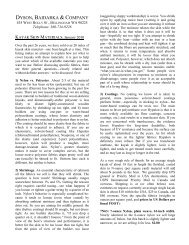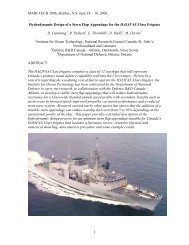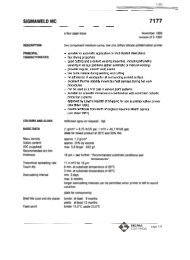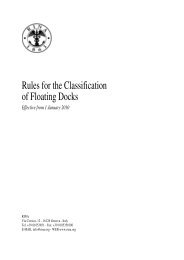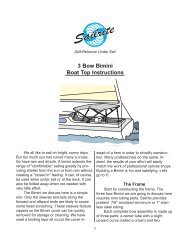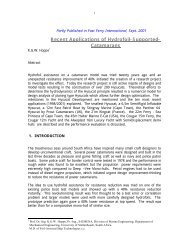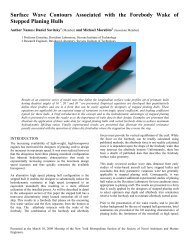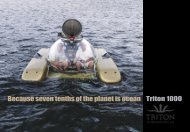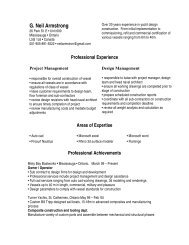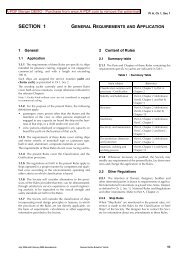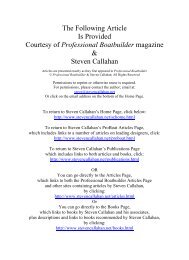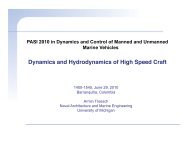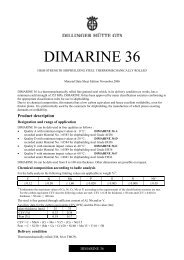RULES DET NORSKE VERITAS (DNV) = STRUCTURES = - Boat Design Net
RULES DET NORSKE VERITAS (DNV) = STRUCTURES = - Boat Design Net
RULES DET NORSKE VERITAS (DNV) = STRUCTURES = - Boat Design Net
You also want an ePaper? Increase the reach of your titles
YUMPU automatically turns print PDFs into web optimized ePapers that Google loves.
Rules for High Speed, Light Craft and Naval Surface Craft, January 2011 Amended July 2011, see page 3Pt.3 Ch.3 Sec.8 – Page 38SECTION 8WELD CONNECTIONSA. GeneralA 100 Introduction101 In this section requirements for welding of aluminium alloys and various connection details are given.102 For general requirements for approval of welding of wrought aluminium alloys, see Pt.2 Ch.3 Sec.2.A 200 Welding particulars201 Welding at ambient air temperature of – 5°C or below is only to take place after special agreement.202 The welding sequence is to be such that the parts may as far as possible contract freely in order to avoidcracks in already deposited runs of weld. Where a butt meets a seam, the welding of the seam is to beinterrupted well clear of the junction and not be continued until the butt is completed. Welding of butt is tocontinue past the open seam and the weld be chipped out for the seam to be welded straight through.203 Welding procedures and welding consumables approved for the type of connection and parent materialin question, are to be used. See “Register of Approved Manufac-turers” and “Register of Type ApprovedProducts”.B. Types of Welded JointsB 100 Butt joints101 For panels with plates of equal thickness, the joints are normally to be butt welded with prepared edges.102 For butt welded joints of plates with thickness difference exceeding 2 mm, the thicker plate is normallyto be tapered. The taper is generally not to exceed 1:3.103 Welding against permanent or temporary backing is to be specially considered with respect to fatigue,non-destructive examination and any risk of crevice corrosion.B 200 Tee or cross joints201 The connection of girder and stiffener webs to plate panels, including plating abutting to other platepanels, is normally to be made by fillet welds as indicated in Fig.1.Fig. 1Tee or cross jointsWhere the connection is highly stressed, the edge of the abutting plate may have to be bevelled to give deep orfull penetration welding. Where the connection is moderately stressed, intermittent welds may be used. Withreference to Fig.2, the various types of intermittent welds are as follows:— chain weld— staggered weld— scallop weld (closed).<strong>DET</strong> <strong>NORSKE</strong> <strong>VERITAS</strong> AS



